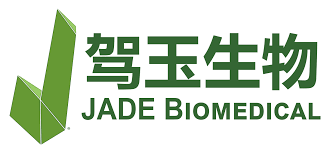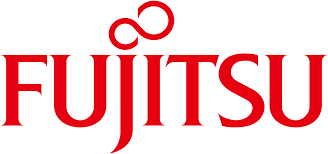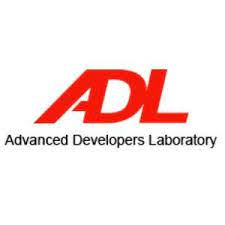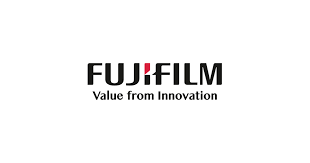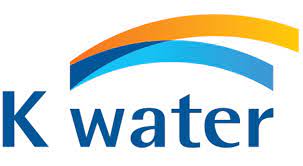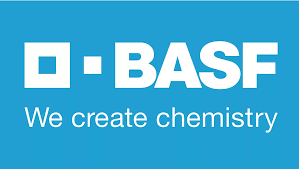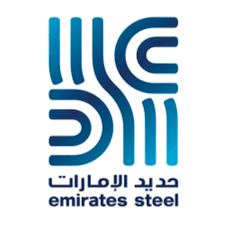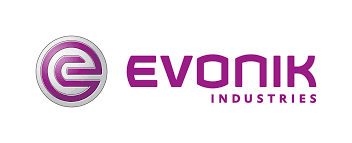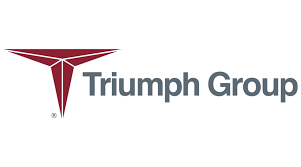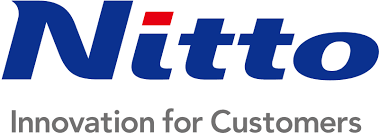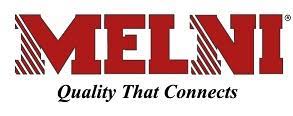Global Oriented Strand Board (OSB) Market Size, Share & Trends Analysis Report, Grade (OSB/1, OSB/2, OSB/3, and OSB/4), End-user Application (Furniture, Construction, and Packaging), By Region (North America, Europe, APAC, and Others), and Segment Forecasts, 2023 – 2030
- Report Summary
- Table of Contents
- Segmentation
- Methodology
- Download Sample
Global Oriented Strand Board (OSB) Market was valued at US $ 28.7 Billion in 2022 and is expected to reach US $ 45.1 Billion by 2030 growing at a CAGR of 5.8% during the forecast period 2023 – 2030.
The oriented strand board (OSB) market can be defined as a sector within the construction and building materials industry that involves the production, distribution, and utilization of OSB, a versatile engineered wood panel material. OSB is created by compressing and bonding wood strands, typically with adhesives, to form a durable and cost-effective construction material. This market encompasses various grades and types of OSB products, each designed for specific applications in the construction, manufacturing, and residential sectors. Key components of the OSB market include the manufacturing processes, distribution networks, suppliers, and end-users who rely on OSB for applications such as sheathing, subflooring, roofing, wall sheathing, and structural components.
The market is characterized by its contribution to cost-effective construction and its alignment with sustainability goals through the use of sustainable forestry practices and recycled materials. It is also influenced by factors like demand for energy-efficient construction materials, regulatory compliance, and innovations in OSB production techniques. The OSB market serves a global customer base, including construction firms, manufacturers, contractors, and individuals involved in both residential and commercial building projects.
Some of the benefits of designing a Oriented Strand Board (OSB) Market include:
- Cost-Efficiency: OSB presents a cost-effective alternative when compared to traditional options like plywood. It delivers robust performance while maintaining a budget-friendly price point, making it a fiscally prudent choice for both builders and manufacturers.
- Strength and Endurance: OSB is renowned for its structural strength and dimensional resilience. Capable of withstanding substantial loads, it exhibits resistance to warping and delamination, ensuring a durable and long-lasting material for construction.
- Adaptability: OSB stands out for its remarkable versatility and applicability across a wide range of uses, including sheathing, subflooring, roofing, and integration into composite insulated panels. Its flexibility suits diverse construction and manufacturing requirements.
- Enhanced Thermal Properties: OSB boasts thermal insulating attributes, enhancing the energy efficiency of buildings. This feature is particularly valuable in construction projects aimed at creating well-insulated, energy-efficient structures.
- Environmental Responsibility: A substantial number of OSB manufacturers adopt sustainable forestry practices and incorporate recycled wood materials in their production processes. This commitment to responsible forest management not only reduces environmental impact but also aligns with the increasing demand for environmentally friendly construction materials.
COVID -19 Impact
The COVID-19 pandemic exerted a significant impact on the oriented strand board (OSB) market, as it did on numerous industries globally. The pandemic introduced disruptions throughout the OSB sector, with notable consequences on supply chains, demand dynamics, pricing, and operations. Supply chain interruptions, resulting from lockdowns and factory closures in various regions, led to challenges in obtaining raw materials and distributing finished OSB products. Fluctuating demand patterns characterized the pandemic's impact on the market. Initially, construction projects were delayed or suspended, affecting the demand for OSB in the building sector. Conversely, the retail market experienced a surge in demand for OSB as home improvement and renovation projects gained momentum during lockdowns.
Price volatility was another feature of the OSB market during the pandemic. Prices initially declined due to reduced demand and market uncertainty, but they rebounded as demand recovered while supply chain disruptions persisted. Operational challenges, such as the need for social distancing and safety protocols, labor shortages, and absenteeism, affected OSB manufacturing facilities, reducing production capacity. Moreover, the pandemic influenced market trends, highlighting the importance of home comfort and remote work setups. This shift in consumer preferences impacted the demand for OSB in areas related to residential construction and renovation. Regulatory changes and safety measures, necessary to combat the pandemic, introduced complexities and additional operational costs for OSB manufacturing.
However, the pandemic also underscored the significance of sustainable and energy-efficient construction materials. OSB, known for its thermal insulating properties, has been sought after in eco-friendly housing, and the long-term outlook for OSB in sustainable construction remains promising. As the world adapts to the ongoing effects of the pandemic, the OSB market, like other industries, is expected to evolve in response to changing market dynamics and consumer preferences.
Factors Driving the Market
Drivers
Increased use of OSB in sustainable housing
The increasing use of OSB (Oriented Strand Board) in sustainable housing is a potent catalyst for market growth. Sustainable housing, characterized by its dedication to energy efficiency and ecological responsibility, underscores the pivotal role of OSB in modern construction practices. OSB's impressive thermal insulation properties make it a cornerstone in efforts to reduce energy consumption and environmental impact. This resonates with environmentally conscious homeowners striving to lower both their energy costs and carbon footprint, propelling the demand for OSB in sustainable housing.
Green building certifications, like LEED and BREEAM, incentivize the use of eco-friendly materials with minimal VOC emissions, further establishing OSB as a preferred construction component. Sustainability is amplified by OSB's composition, often sourced from sustainable forestry practices and incorporating recycled wood materials, championing the cause of responsible forest management. OSB's strength, adaptability, and versatility allow it to shine across various housing applications, from sheathing to subflooring and roofing, aligning seamlessly with the diverse needs of sustainable housing projects.
For instance, As per data from the US Census Bureau, the total value of private construction in the United States during 2022 reached USD 1.43 trillion, marking a notable increase of 10.47% compared to the preceding year when it amounted to USD 1.28 trillion. Residential construction spending in 2022 reached USD 899.1 billion, reflecting an impressive rise of 13.3% compared to 2021, while non-residential construction spending totaled USD 530.1 billion, indicating a decrease of 9.1% compared to the previous year. This surge in private construction activity within the United States is poised to foster heightened demand for the composite insulated panels market, particularly within the nation's construction sector.
An integral component of sustainability is waste reduction, and OSB's efficient production minimizes waste generation, fostering its eco-friendly appeal. With a growing number of environmentally conscious homeowners and buyers seeking eco-friendly homes, the demand for sustainable housing projects employing OSB continues to surge, bolstering market growth. Government incentives, such as tax credits, further underpin this trend, making OSB an economically attractive choice for sustainable housing.
Challenges
Emissions of Volatile Organic Compounds (VOCs), such as Formaldehyde
Emissions of Volatile Organic Compounds (VOCs), including substances like formaldehyde, have a profound impact on various industries, particularly those tied to construction, manufacturing, and interior design. Stringent environmental regulations and a heightened awareness of the health risks associated with VOCs have driven a significant shift in market dynamics. Governments worldwide have imposed limits on allowable VOC levels, compelling manufacturers to develop low or zero-VOC products to meet both regulatory requirements and the growing demand for eco-friendly solutions. Health-conscious consumers increasingly seek products with reduced VOC emissions for their homes and workplaces, prompting manufacturers to prioritize low-VOC or VOC-free options. Green building standards and certification programs further promote these products in the construction industry, favoring the adoption of materials with minimal emissions.
For businesses, addressing VOC emissions presents growth opportunities, particularly for those investing in research and development to create innovative, sustainable alternatives. The market is evolving to reward companies that produce environmentally responsible and health-conscious products, fostering a competitive edge for forward-thinking manufacturers.
In this landscape, market segmentation occurs, with a subset of consumers willing to pay a premium for exceptionally low-VOC products. As a result, companies can differentiate their offerings and command higher prices for their environmentally friendly solutions. Furthermore, international trade is affected, as compliance with VOC regulations is vital for accessing markets with strict emission standards, thereby opening up new revenue streams. In conclusion, VOC emissions, notably formaldehyde, are reshaping market dynamics by fostering a demand for low-VOC and VOC-free products, influencing regulatory changes, spurring innovation, and guiding consumer preferences. Companies that embrace environmental sustainability and prioritize health-conscious products stand to thrive in this evolving market landscape.
Trends
Increasing applications of OSB in structural insulated panels
The surge in applications of OSB (Oriented Strand Board) within the construction of Structural Insulated Panels (SIPs) is a significant driver of growth in the OSB grade market. SIPs, comprising OSB sandwiched between rigid foam insulation, are an integral component in the construction of energy-efficient buildings. With a heightened focus on sustainable and energy-efficient construction, the demand for SIPs - and, by extension, OSB - is on the rise. The versatility and performance of SIPs are closely tied to the use of OSB, which offers structural integrity and dimensional stability. OSB's robust properties enable SIPs to bear structural loads and withstand stress while facilitating easy attachment of other building components. This not only enhances the structural quality of buildings but also expedites construction processes, making it a cost-effective solution.
As the construction industry experiences growth due to factors like urbanization, population expansion, and infrastructure development, the demand for SIPs and OSB intensifies. Moreover, with an increasing emphasis on compliance with strict building codes and environmental regulations, the use of OSB in SIPs becomes instrumental in meeting these standards and contributing to sustainability objectives. for instance, As per data from the US Census Bureau, the total value of new construction projects in 2022 reached an estimated USD 1.79 trillion, marking a substantial growth rate of 10.20% compared to the USD 1.63 trillion recorded in 2021. This positive trajectory is expected to continue in the years ahead, further driving the utilization of composite insulated panels across diverse building and construction applications. Moreover, in Canada, the construction sector stands as the second-largest in North America, poised for continued improvement and growth up to 2024. To illustrate, data from the Canada Mortgage and Housing Corporation reveals that in December 2022, approximately 334.1 thousand dwelling units were under construction, marking a notable increase of 12.8% compared to the previous year. This surge in construction activities within the country is anticipated to generate increased demand for the composite insulated panels market.
Manufacturers are continually advancing OSB production to cater to the unique requirements of the SIPs market, such as precise thicknesses and surface qualities that align with the needs of these panels. Additionally, contemporary architectural and design trends favor the clean lines, energy efficiency, and ease of construction associated with SIPs, driving their adoption and, subsequently, the demand for OSB. Lastly, the cost-effectiveness of OSB compared to alternative materials, such as plywood, makes SIPs an appealing choice for builders and contractors who seek to balance quality, performance, and affordability in construction projects. In conclusion, the growing utilization of OSB in SIPs harmonizes with the global emphasis on energy-efficient and environmentally conscious construction practices, positioning the OSB grade market for sustained expansion as the construction industry continues to evolve.
Market Segmentation
By Grade
- The OSB/3 dominated the Oriented Strand Board (OSB) Market in
- The OSB/3 is the fastest growing segment, growing at a CAGR of 6.4% during the forecast period.
By Grade, the global Oriented Strand Board (OSB) Market is divided into OSB/1, OSB/2, OSB/3, and OSB/4.
OSB/3, a grade of oriented strand board (OSB), has gained prominence and experienced rapid growth in the market due to its exceptional attributes and suitability for a wide range of applications. Known for its strength and versatility, OSB/3 is a high-performance grade that meets various structural and non-structural needs, making it a preferred choice in the construction and manufacturing industries. Its appeal is further enhanced by its cost-efficiency, offering a budget-friendly alternative to traditional materials like plywood. Moreover, OSB/3 often complies with rigorous building codes and regulations, making it an ideal choice for projects with stringent standards. As sustainability becomes increasingly important, OSB/3's eco-friendly production methods, including the use of sustainable forestry practices and recycled wood materials, align with environmental concerns and contribute to its growth. A thriving construction industry, coupled with innovations and effective marketing efforts, further fuels the demand for OSB/3, cementing its position as a leading and fast-growing grade in the OSB market.
By End-use Application
- The Construction segment dominated the Oriented Strand Board (OSB) Market in 2022.
- Construction is the fastest growing segment, growing at a CAGR of 13.54% during the forecast period.
By End-Use Application the Oriented Strand Board (OSB) Market is divided by Furniture, Construction, and Packaging
The construction sector took the lead as the largest application segment, achieving a significant valuation of USD 9.48 billion in 2022. The growth in OSB usage within construction applications, including single-layer flooring, subflooring, wall and ceiling sheathing, panel sheathing, industrial containers, and mezzanine decks, is closely tied to robust housing demand in the United States. This demand is underpinned by the product's exceptional qualities, encompassing strength, rigidity, moisture resistance, lack of core voids and knots, all at a cost-effective price point. Additionally, OSB's exemption from ISPM-15 regulations positions it favorably for use in crating and packaging for international exports. Its ease of handling, cutting, assembly, nailing, and drilling further extends its utility in various packaging containers.
For context, it's noteworthy that the construction sector in the United States held a substantial value of USD 1,625,882 million in November 2021, according to data from the US Census Bureau. Within this sector, the residential segment accounted for around USD 796,308 million, while the non-residential sector's value stood at approximately USD 477,299 million. This establishes the United States as a major global player in the construction market. Overall, the OSB market is poised for growth, driven by the expanding construction sector across all regions in the foreseeable future.
By Region
- The North America region dominated the Oriented Strand Board (OSB) Market in 2022.
- The Europe region is the fastest growing segment, growing at a CAGR of 5.4% during the forecast period.
By region, the global Oriented Strand Board (OSB) Market is divided into North America, Europe, APAC and Others. Others is further divided into Middle East, Africa and South America.
In 2022, North America stood out as the primary regional market, reporting a substantial This dominance was driven by an increasing adoption of advanced products, such as the utilization of bio-adhesives as an eco-friendly alternative to crude oil-derived resins. This shift is anticipated to mitigate the impact of crude oil price fluctuations, ultimately favoring industry growth in the North American region. Meanwhile, Europe demonstrated a consistent upward trajectory in OSB production, with Germany and Poland emerging as the key players in this sector. For instance, The United States is home to an immense construction industry that wields significant influence across various sectors, encompassing commercial, industrial, institutional, residential, infrastructure, energy, and utility construction. For January 2022, construction spending was estimated at a substantial seasonally adjusted annual rate of USD 1,677.2 billion. Additionally, in February, construction spending in the United States registered a noteworthy increase of 1.3% when compared to the seasonally adjusted annual rate of USD 1.677 trillion in January 2022.
Europe's burgeoning construction industry, propelled by low-interest rates and a significant influx of migrants, is expected to play a pivotal role in driving growth within the region. Moving eastward, the Asia Pacific region is projected to be the swiftest expanding market during the forecast period, driven by its immense potential for infrastructure development. Moreover, the region exhibits strong demand for these products in industrial applications, particularly as a replacement for plywood and blockboard in scenarios where high-quality panel boards are essential. China led the Asia Pacific market in 2017 and is anticipated to maintain its leading position in the coming years.
Competitive Landscape
The global Oriented Strand Board (OSB) Market is consolidated with the presence of few major players contributing to the market revenue. This dominance of these major players is driven by their technological expertise, extensive resources, and established brand recognition. These companies typically offered comprehensive and diversified solutions to end use industries.
- Weyerhaeuser Company
Weyerhaeuser Company, an American timberland enterprise, possesses an extensive land portfolio, with ownership of nearly 12,400,000 acres (19,400 square miles or 50,000 square kilometers) of timberlands within the United States. Additionally, it effectively manages an additional 14,000,000 acres (22,000 square miles or 57,000 square kilometers) of timberlands through long-term licenses in Canada. With a legacy spanning over a century, Weyerhaeuser has been a stalwart in the wood product manufacturing sector. The company functions as a real estate investment trust (REIT). Founded in 1900 by Frederick Weyerhaeuser, a German immigrant who arrived in the United States in 1852, the company's roots trace back to a humble logging operation. However, Weyerhaeuser's rapid diversification saw it expanding into various sectors of the forest products industry, encompassing lumber, plywood, and pulp and paper.
- Sonae Industria SGPS SA
Sonae Indústria SGPS SA, a prominent Portuguese manufacturing firm, specializes in the production of wood-based panels and related products. Headquartered in Maia, Portugal, it operates across multiple continents, including Europe, North America, and South Africa. This company operates as a subsidiary under the Sonae Group, one of Portugal's leading conglomerates. Emerging in 1959 as an integral part of the Sonae Group, Sonae Indústria swiftly rose to prominence as one of Portugal's major manufacturers of wood-based panels. In the 1990s, the company embarked on an international expansion, making strategic acquisitions in Spain, Ireland, and South Africa. Notably, in 2016, Sonae Indústria entered into a significant strategic partnership with Arauco, a Chilean enterprise known as one of the world's preeminent producers of forest resources.
- RoyOMartin Lumber Company
RoyOMartin Lumber Company is an integrated forest products enterprise with a comprehensive approach to sustainability, overseeing the responsible management of more than 600,000 acres of timberland and the production of wood-based goods from its proprietary raw materials. The company's headquarters are located in Alexandria, Louisiana, and it operates manufacturing facilities in both Louisiana and Texas. RoyOMartin stands as one of the United States' foremost OSB manufacturers, boasting an impressive annual production capacity exceeding 2.5 billion square feet. Beyond OSB, the company also manufactures plywood, timbers, and boards. These versatile wood products find applications in a diverse range of industries, including residential and commercial construction, industrial packaging, and furniture manufacturing.
- Produits Forestiers Arbec Inc.
- Norbord Inc.
- Louisiana-Pacific Corporation
- KronoSwiss, Kronospan Limited
- Huber Engineered Woods LLC
- Georgia-Pacific Wood Products LLC
- EGGER Group
- Coillte
- West Fraser
- Koch Industries
- Suncrest Plydecor
- Divine Overseas
- Opal Solutions
- Ainsworth Lumber Co. Ltd
- Flylen Technology Private Limited
- Boise Cascade
Recent Developments
- In August 2022, Georgia-Pacific made a significant announcement, revealing their intention to invest a substantial $40 million into upgrading their oriented strand board (OSB) manufacturing facility located in Alcolu, South Carolina. This strategic move aims to bolster the company's production capabilities by a considerable 150 million square feet for OSB products.
- In December 2021, West Fraser executed a pivotal acquisition, taking control of an oriented strand board mill situated near Allendale, South Carolina. This acquisition not only signifies a major expansion of West Fraser's geographical footprint but also enhances the company's overall production capacity, reinforcing its strategic position in the industry.
- Back in February 2021, West Fraser unveiled another game-changing development by announcing the successful acquisition of all the issued and outstanding common shares of Norbord. This acquisition had a transformative effect on the company, enriching its product portfolio and setting the stage for further growth and diversification.
Oriented Strand Board (OSB) Market Scope
| Report Components | Details |
|---|---|
| Forecast Period | 2023 – 2030 |
| Quantitative Units | Revenue in US $ |
| Drivers |
|
| Challenges |
|
| Trends |
|
| Segments Covered | Grade (OSB/1, OSB/2, OSB/3, and OSB/4), End-user Application (Furniture, Construction, and Packaging) |
| Countries Covered | U.S. and Canada in North America, Germany, France, U.K., Netherlands, Switzerland, Belgium, Russia, Italy, Spain, Turkey, Rest of Europe in Europe, China, Japan, India, South Korea, Singapore, Malaysia, Australia, Thailand, Indonesia, Philippines, Rest of Asia-Pacific (APAC) in the APAC, Others include Saudi Arabia, U.A.E, South Africa, Egypt, Israel, Rest of Middle East and Africa (MEA), Brazil, Argentina, Mexico, and Rest of South America as part of South America |
| Market Players Covered | Weyerhaeuser Company, Sonae Industria SGPS SA, RoyOMartin Lumber Company, Produits Forestiers Arbec Inc., Norbord Inc., Louisiana-Pacific Corporation, KronoSwiss, Kronospan Limited, Huber Engineered Woods LLC, Georgia-Pacific Wood Products LLC, EGGER Group, Coillte, West Fraser, Koch Industries, Suncrest Plydecor, Divine Overseas, Opal Solutions, Ainsworth Lumber Co. Ltd, Flylen Technology Private Limited, Boise Cascade |
Table of Contents
1 INTRODUCTION OF GLOBAL ORIENTED STRAND BOARD (OSB) MARKET
1.1 Overview of the Market
1.2 Scope of Report
1.3 Assumptions
2 EXECUTIVE SUMMARY
3 RESEARCH METHODOLOGY
3.1 Data Mining
3.2 Validation
3.3 Primary Interviews
3.4 List of Data Sources
4 GLOBAL ORIENTED STRAND BOARD (OSB) MARKET OUTLOOK
4.1 Overview
4.2 Market Dynamics
4.2.1 Drivers
4.2.2 Restraints
4.2.3 Opportunities
4.3 Porters Five Force Model
4.3.1. Bargaining Power of Suppliers
4.3.2. Threat of New Entrants
4.3.3. Threat of Substitutes
4.3.4. Competitive Rivalry
4.3.5. Bargaining Power among Buyers
4.4 Value Chain Analysis
5 GLOBAL ORIENTED STRAND BOARD (OSB) MARKET, BY GRADE
5.1 Overview
5.2 OSB/1
5.3 OSB/2
5.4 OSB/3
5.5 OSB/4
6 GLOBAL ORIENTED STRAND BOARD (OSB) MARKET, BY End USE APPLICATION
6.1 Overview
6.2 Furniture
6.3 Construction
6.4 Packaging
7 GLOBAL ORIENTED STRAND BOARD (OSB) MARKET, BY REGION
7.1 North America
7.1.1 U.S.
7.1.2 Canada
7.2 Europe
7.2.1 Germany
7.2.3 U.K.
7.2.4 France
7.2.5 Rest of Europe
7.3 Asia Pacific
7.3.1 China
7.3.2 Japan
7.3.3 India
7.3.4 South Korea
7.3.5 Singapore
7.3.6 Malaysia
7.3.7 Australia
7.3.8 Thailand
7.3.9 Indonesia
7.3.10 Philippines
7.3.11 Rest of Asia Pacific
7.4 Others
7.4.1 Saudi Arabia
7.4.2 U.A.E.
7.4.3 South Africa
7.4.4 Egypt
7.4.5 Israel
7.4.6 Rest of Middle East and Africa (MEA)
7.4.7 Brazil
7.4.8 Argentina
7.4.9 Mexico
7.4.10 Rest of South America
8 COMPANY PROFILES
8.1 Weyerhaeuser Company
8.1.1. Company Overview
8.1.2. Key Executives
8.1.3. Operating Business Segments
8.1.4. Product Portfolio
8.1.5. Financial Performance (As per availability)
8.1.6 Key News
8.2 Boise Cascade
8.2.1. Company Overview
8.2.2. Key Executives
8.2.3. Operating Business Segments
8.2.4. Product Portfolio
8.2.5. Financial Performance (As per availability)
8.2.6. Key News
8.3 Sonae Industria SGPS SA
8.3.1. Company Overview
8.3.2. Key Executives
8.3.3. Operating Business Segments
8.3.4. Product Portfolio
8.3.5. Financial Performance (As per availability)
8.3.6. Key News
8.4 RoyOMartin Lumber Company
8.4.1. Company Overview
8.4.2. Key Executives
8.4.3. Operating Business Segments
8.4.4. Product Portfolio
8.4.5. Financial Performance (As per availability)
8.4.6. Key News
8.5 Produits Forestiers Arbec Inc.
8.5.1. Company Overview
8.5.2. Key Executives
8.5.3. Operating Business Segments
8.5.4. Product Portfolio
8.5.5. Financial Performance (As per availability)
8.5.6. Key News
8.6 Norbord Inc.
8.6.1. Company Overview
8.6.2. Key Executives
8.6.3. Operating Business Segments
8.6.4. Product Portfolio
8.6.5. Financial Performance (As per availability)
8.6.6. Key News
8.7 Louisiana-Pacific Corporation
8.7.1. Company Overview
8.7.2. Key Executives
8.7.3. Operating Business Segments
8.7.4. Product Portfolio
8.7.5. Financial Performance (As per availability)
8.7.6. Key News
8.8 KronoSwiss
8.8.1. Company Overview
8.8.2. Key Executives
8.8.3. Operating Business Segments
8.8.4. Product Portfolio
8.8.5. Financial Performance (As per availability)
8.8.6. Key News
8.9 Kronospan Limited
8.9.1. Company Overview
8.9.2. Key Executives
8.9.3. Operating Business Segments
8.9.4. Product Portfolio
8.9.5. Financial Performance (As per availability)
8.9.6. Key News
8.10 Huber Engineered Woods LLC
8.10.1. Company Overview
8.10.2. Key Executives
8.10.3. Operating Business Segments
8.10.4. Product Portfolio
8.10.5. Financial Performance (As per availability)
8.10.6. Key News
8.11 Georgia-Pacific Wood Products LLC
8.11.1. Company Overview
8.11.2. Key Executives
8.11.3. Operating Business Segments
8.11.4. Product Portfolio
8.11.5. Financial Performance (As per availability)
8.11.6. Key News
8.12 EGGER Group
8.12.1. Company Overview
8.12.2. Key Executives
8.12.3. Operating Business Segments
8.12.4. Product Portfolio
8.12.5. Financial Performance (As per availability)
8.12.6. Key News
8.13 Coillte
8.13.1. Company Overview
8.13.2. Key Executives
8.13.3. Operating Business Segments
8.13.4. Product Portfolio
8.13.5. Financial Performance (As per availability)
8.13.6. Key News
8.14 West Fraser
8.14.1. Company Overview
8.14.2. Key Executives
8.14.3. Operating Business Segments
8.14.4. Product Portfolio
8.14.5. Financial Performance (As per availability)
8.14.6. Key News
8.15 Koch Industries
8.15.1. Company Overview
8.15.2. Key Executives
8.15.3. Operating Business Segments
8.15.4. Product Portfolio
8.15.5. Financial Performance (As per availability)
8.15.6. Key News
8.16 Suncrest Plydecor
8.16.1. Company Overview
8.16.2. Key Executives
8.16.3. Operating Business Segments
8.16.4. Product Portfolio
8.16.5. Financial Performance (As per availability)
8.16.6. Key News
8.17 Divine Overseas
8.17.1. Company Overview
8.17.2. Key Executives
8.17.3. Operating Business Segments
8.17.4. Product Portfolio
8.17.5. Financial Performance (As per availability)
8.17.6. Key News
8.18 Opal Solutions
8.18.1. Company Overview
8.18.2. Key Executives
8.18.3. Operating Business Segments
8.18.4. Product Portfolio
8.18.5. Financial Performance (As per availability)
8.18.6. Key News
8.19 Ainsworth Lumber Co. Ltd
8.19.1. Company Overview
8.19.2. Key Executives
8.19.3. Operating Business Segments
8.19.4. Product Portfolio
8.19.5. Financial Performance (As per availability)
8.19.6. Key News
8.20 Flylen Technology Private Limited
8.20.1. Company Overview
8.20.2. Key Executives
8.20.3. Operating Business Segments
8.20.4. Product Portfolio
8.20.5. Financial Performance (As per availability)
8.20.6. Key News
Global Oriented Strand Board Market Segmentation
Oriented Strand Board by Grade: Market Size & Forecast 2023-2030
- OSB/1
- OSB/2
- OSB/3
- OSB/4
Oriented Strand Board by End Use Application: Market Size & Forecast 2023-2030
- Construction
- Furniture
- Packaging
Oriented Strand Board by Geography: Market Size & Forecast 2023-2030
- North America (USA, Canada, Mexico)
- Europe (Germany, UK, France, Russia, Italy, Rest of Europe)
- Asia-Pacific (China, Japan, South Korea, India, Southeast Asia, Rest of Asia-Pacific)
- South America (Brazil, Argentina, Columbia, Rest of South America)
- Middle East and Africa (Saudi Arabia, UAE, Egypt, Nigeria, South Africa, Rest of MEA)
Major Players:
- Weyerhaeuser Company
- Sonae Industria SGPS SA
- RoyOMartin Lumber Company
- Produits Forestiers Arbec Inc.
- Norbord Inc.
- Louisiana-Pacific Corporation
- KronoSwiss, Kronospan Limited
- Huber Engineered Woods LLC
- Georgia-Pacific Wood Products LLC
- EGGER Group
- Coillte
- West Fraser
- Koch Industries
- Suncrest Plydecor
- Divine Overseas
- Opal Solutions
- Ainsworth Lumber Co. Ltd
- Flylen Technology Private Limited
- Boise Cascade


